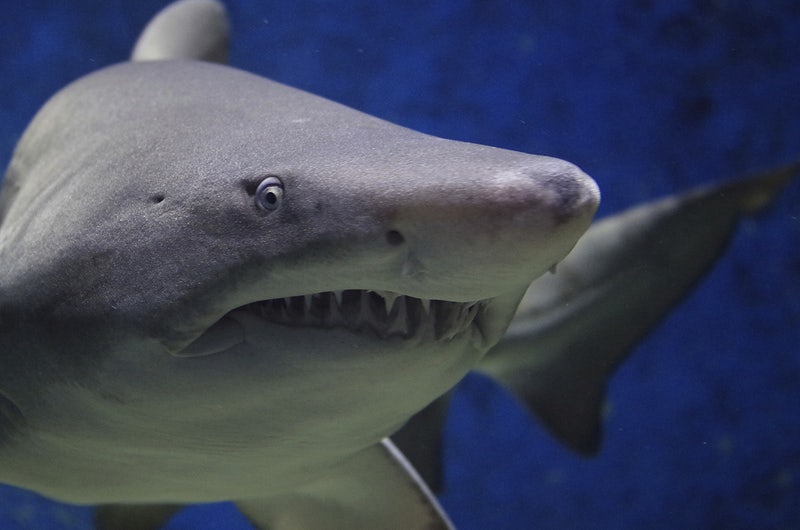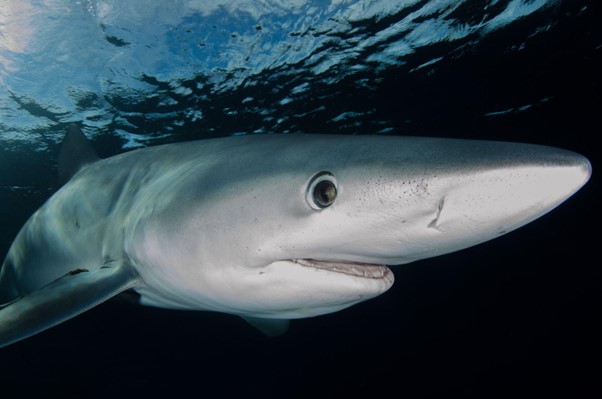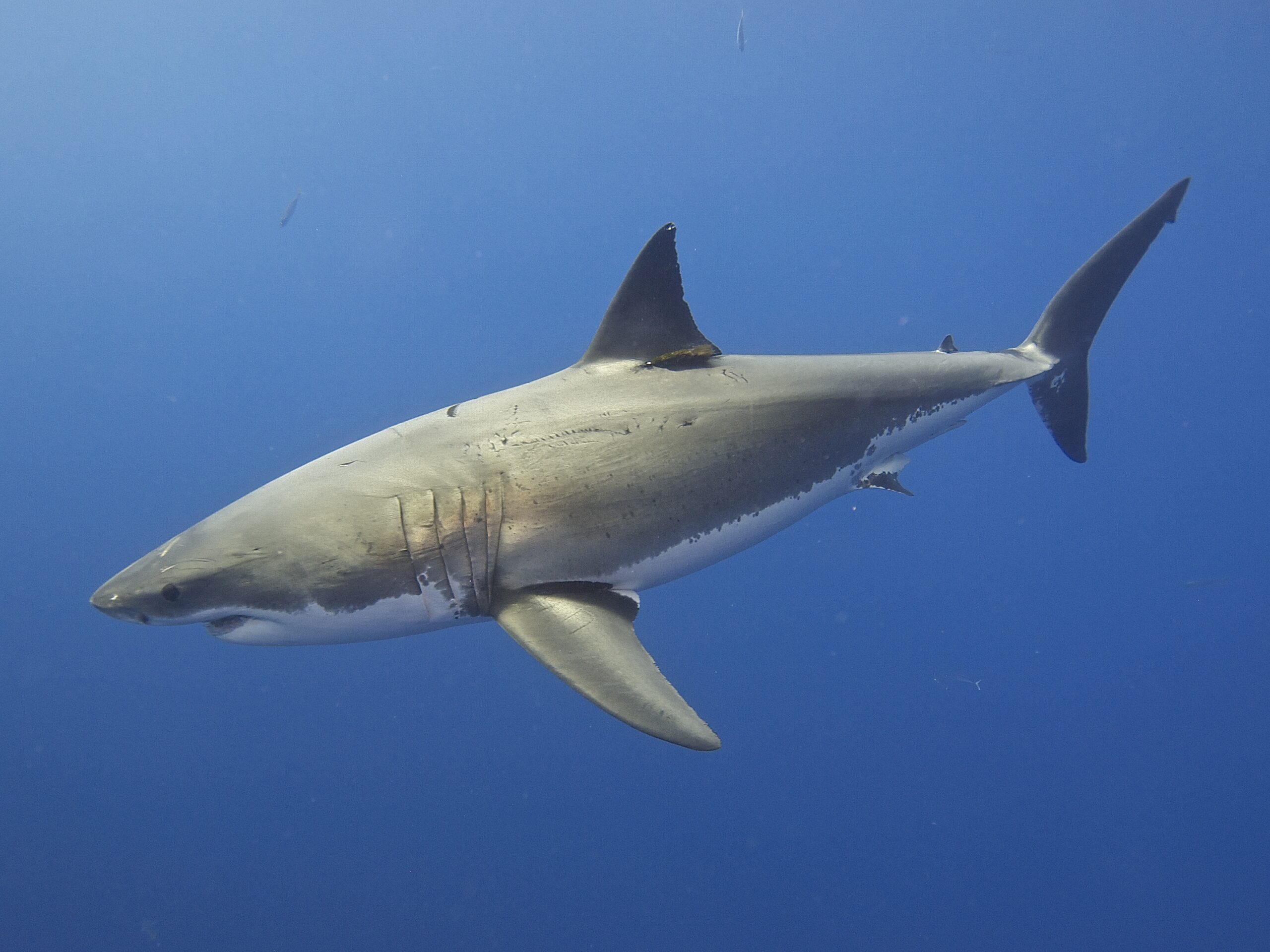There are many ocean creatures, but sharks are considered the biggest and the scariest, with hundreds of serrated teeth capable of grinding humans and anything else that comes their way. Though not all shark species match this, when you look at the great white sharks, they truly portray the picture of the daunting and giant beasts. While there are over 500 species of sharks inhabiting the world’s oceans, the great white is acknowledged as the most dangerous. It makes everyone think about how many teeth does great white shark have.
Not only the most dangerous, but great whites are apex predators with only Orcas targeting them, and that too on rare occasions. With exceptional hunting abilities, great white sharks can take on any marine creatures, including mammals, whales, sea lions, dolphins, or even other sharks. Even uneatable objects are found in great white stomachs. That is all due to their strength and power, which mainly comes from their sharp teeth.
As amazing creatures with so many incredible qualities, sharks are truly fascinating, and when it comes to great white sharks, the most dangerous species, they are even more captivating. Be it about their size or the bite force, the more you get to know about the species, the more it enthralls.
With that said, it’s important for you to know that each shark is made differently and possesses dissimilar qualities, attributes, and traits. Aside from varying sizes, shapes, colors, and behavior, the number of teeth and their function differs with each species. The whale shark, for example, is the biggest shark alive today and has hundreds of tiny teeth, but they have no major role in feeding and are called non-functional teeth.
However, there are shark species that have razor-sharp teeth that are designed to tear apart anything that fits in the mouth of the shark. In this case, one such example is the great white shark.
Moving forward, let’s get to know how many teeth a great white has.
How Many Teeth Do Great Sharks Have?
Sharks are completely reliant on their teeth, as they don’t have the claws to get hold of their prey. As we are currently talking about the apex predator, the great white shark, it’s surprising to know how many teeth they can have in their lifetime.
The great white shark’s jaws are filled with rows of serrated teeth, and it is estimated that he has 300 teeth in total. It is true that sharks continue to lose their teeth over time, but the developing teeth will replace them as well. At any given time, a great white shark has approximately 50 active teeth, with their upper jaw having 23-28 teeth and their lower jaw having 20-26 teeth. When the shark bites, its jaws shake in unison, helping its teeth see off chunks of flesh; it uses the serrated edges of its teeth to cut its prey into bite-sized pieces.
How Strong Do Great White Sharks Bite?
Based on the feeding habitat, each species has a unique set of teeth. The strong, powerful, sharp, razor-like teeth mark The Great white sharks as carnivores. The jaws with multiple rows of teeth have the strongest bite one can ever imagine. The Great White sharks can have a bite force of 18,000 N which is strong enough to rip the prey in just one stroke!
How Do White Sharks Hunt Their Prey?
The White sharks use a powerful death blow to grab and slaughter the prey because the teeth and jaws are highly adapted to their feeding habitat. The Great White Sharks first grab the prey with their lower jaws, then bite it with their upper jaws. After that, the sharks shake the head of the prey up and down with full power, take a large bite of the delicious meat, and swallow it. The predatory animal feeds on small fishes, mollusks, crustaceans, sea birds, seals, sea lions, turtles, dolphins, and other sharks.
How Do White Sharks Capable of Moving Their Jaws?
The Great White sharks have movable jaws, they can also rotate and pull the jaws in back-and-forth movement. The Great white sharks have few rows of additional teeth other than the main set. When the White sharks open the mouth, the teeth move outward and as they close the mouth, the teeth move back to their original position. Moreover, due to the presence of sensory nerve cells, the shark’s teeth are highly sensitive to touch and pressure.
What is the Type of Great White Shark’s Teeth?
As mentioned earlier, there are over 500 shark species, and each one of them is made differently. Thus, each shark family and species has its own distinctive teeth type, although they can be divided into four broad categories based on their shape. Below you can read out the details.
Non-functional teeth
These are the types of teeth that have no direct or indirect role when it comes to the feeding habit of sharks. The whale sharks, the basking shark, and the megamouth, which are also regarded as the filter-feeder shark, are known to have non-functional teeth.
Despite the fact that these shark species have many teeth, they are too small, and since they eat mainly plankton and other small sea creatures, teeth play no role in their diets.
Dense flattened teeth
The bottom of the ocean floor is often home to sharks with dense flattened teeth that find a lot of food there, such as lobsters, clams, crabs, or crustaceans. There are many shark species with dense flattened teeth, such as angel sharks and nurse sharks.
Needle-like teeth
Fish and small sharks often feed with needle-like teeth, which can grasp slippery foods very effectively. The bull shark, for example, has needle-like teeth. As well as feeding on stingrays and squid, sharks with needle-like teeth will hunt smaller sharks as well.
Pointed and triangular
These are the types of teeth great white sharks have. Triangular on the above row, and pointed from the below. With serrated edges, shark teeth can essentially chop prey into smaller pieces, making it easier to swallow.
Conclusion
Sharks are incredible creatures of the oceans inhabiting the world’s water for millions of years. The teeth of sharks are shed continuously throughout their lifetimes and can amount to over 20,000 in total. With that said, the great white sharks, which are acknowledged as the most dangerous and scariest species, with razor-sharp teeth, are believed to have 300 teeth, while 50 of them are active at one time. Knowing that we are pretty sure no one would like to come in front of the great white while they are feeding. Even then, you should maintain a safe distance as they are aggressive and may attack you if confronted







